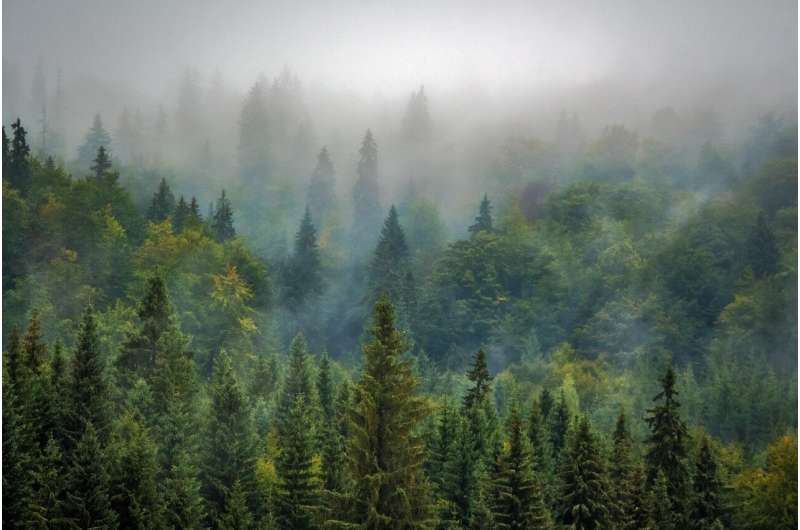Study highlights climate mitigation potential of encouraging Earth's forests to regenerate naturally

Allowing forests to grow back naturally should be regarded alongside other measures like large-scale tree-planting as a critical nature-based approach to mitigating climate change, according to a major new study that maps potential above-ground carbon accumulation rates for forest regrowth across the globe.
Led by scientists from The Nature Conservancy (TNC) and published in the journal Nature, the paper synthesizes results from 256 previous studies (selected from a review of over 11,000 studies) and contains more than 13,000 measurements from locations worldwide. The result is a first of its kind, "wall-to-wall" global, 1km resolution map that highlights areas with the greatest carbon returns from the first 30 years of allowing lands to reforest naturally.
Among the authors of the study is Dr. Cecilia Larrosa, who contributed as part of her work on the Oxford Martin School-TNC Climate Partnership. Published in collaboration with World Resources Institute and 18 other research organizations, the study also highlights how potential carbon accumulation rates vary widely—up to 100-fold—based on factors like climate, soil and slope, providing a much-needed benchmark for assessing the potential of forest regrowth as a climate mitigation strategy, alongside essential actions like the decarbonisation of fossil fuels and other industrial emissions.
"We already know the many benefits of restoring global forest cover—from capturing carbon and cleaning our air and water, to providing habitats for wildlife and providing sustainable development opportunities for local communities. What's been missing to date is robust, actionable data that helps environmental decision-makers understand where natural regrowth makes the most sense as a tool to tackle climate change. Our study will help change that," comments lead author Dr. Susan Cook-Patton from The Nature Conservancy.
Natural regrowth generally represents the least costly way to restore forest, offering an ideal complement to large-scale planting programs while also supporting native tree species that are best adapted to local conditions and restoring precious wildlife habitat.
"Based on the most robust dataset of its kind assembled to date, our map highlights locations worldwide where natural forest regrowth has potential to be an efficient and cost-effective natural climate solution. In doing so, our research also provides a timely reminder of the powerful potential of natural forest regrowth as part of a wider portfolio of natural climate solutions, which encompasses protection, restoration, and improved management of forests, wetlands, grasslands, and agricultural lands," says co-author Dr. Bronson Griscom from Conservation International.
The unprecedented rigor of these latest findings also suggest that average default forest regrowth rates used by the UN Intergovernmental Panel on Climate Change (IPCC) may have been underestimated by 32%. This suggests that natural forest regrowth is an even more powerful climate mitigation tool than previously realized.
"We know there is no single, one-size-fits-all solution for addressing climate change. Our goal with this study was to show where forests can capture carbon fastest on their own, a mitigation strategy that complements keeping forests standing," explains co-author Dr. Nancy Harris from World Resources Institute. "If we let them, forests can do some of our climate mitigation work for us."
"Forests can play a critically important role in climate change mitigation. At a time when many governments are looking to nature-based solutions to help strengthen their national climate change commitments, we hope our study will provide useful guidance about the potential contribution that natural forest regrowth can make towards these goals," says co-author Dr. Kristina Anderson-Teixeira from the Smithsonian Institution.
To coincide with the publication of this study, Nature4Climate (N4C) –the coalition established by The Nature Conservancy with Conservation International, World Resources Institute and other partners to increase global investment and action on nature-based solutions–has published an updated NCSAtlas highlighting areas of high potential globally.
More information: Susan C. Cook-Patton et al. Mapping carbon accumulation potential from global natural forest regrowth, Nature (2020). DOI: 10.1038/s41586-020-2686-x
An interactive map of the potential carbon capture from natural forest regrowth is available at: www.globalforestwatch
Journal information: Nature
Provided by University of Oxford



















